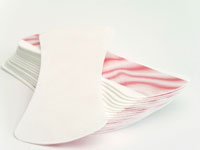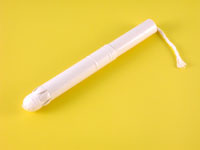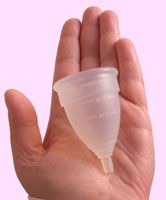- Body
- Fitness
- Nutrition
- Illness &
disability-

- Types of illnesses and disabilities
- Dealing with medical issues
- Coping with your feelings
- Taking care of your body
- Dealing with school
- Relationships
- Becoming independent
- For friends and family
- Stories, celebrities, chats, and other fun stuff
-
Quiz: How much do you know about taking good care of yourself?
-
-
Links to more information
-
-
- Drugs, alcohol
& smoking - Your
feelings - Relationships
- Bullying
- Safety
- Your
future - Environmental
health
Skip section navigation (navigation may have changed)
Section navigation

http://www.girlshealth.gov/
Body
Getting your period

Starting your period — or menstruation — is a major part of puberty and means your body now can make a baby. Usually, girls get their periods at around age 11 or 12, but it can happen any time from 8 to 16. Don’t worry if you get your period later or earlier than your friends get theirs — that happens a lot. If you haven’t gotten your period by 15 (or within three years of when your breasts started to grow), talk to your parent or guardian, your doctor, or another adult you trust.
Read on to learn what your period actually is and how to deal with it. Or, you can skip ahead to learn about PMS and what to do if you are having problems, like missed periods.
Some girls find getting their periods very exciting, and others feel uncomfortable about it. It definitely can take a little getting used to! But lots of women come to see their periods as a wonderful sign that their bodies are healthy and working the way they’re supposed to. Check out one girl’s diary about getting her first period, and follow the links below to learn more.
- What is it?
- How does it happen?
- When does it happen?
- How do I take care of my period?
- What you should know about pads
- What you should know about tampons
- Other ways to care for your period
What is it?  top
top
During your period, what comes out is the blood and tissue that build up as the lining of your uterus each month. Your period flow can be light, heavy, or somewhere in between. Sometimes menstrual blood also will be different colors, like light or dark red. It may also be heavy the first day or so of your period and then decrease.
Periods usually last between three and five days, but it is normal to have periods that are either shorter or longer. It is also normal if your periods are not the same number of days each month, especially in the first years.
How does it happen?  top
top
Your ovaries release one egg about once a month. If you have sexual intercourse, the egg can become fertilized by a man’s sperm and then attach itself to the lining of the uterus and grow into a baby. (Read more about reproduction). If the egg does not become fertilized by sperm, the egg and the lining of your uterus (endometrium) drain out of your vagina as your period.
Learn more about what happens during your menstrual cycle.
When does it happen?  top
top
Menstrual cycles take place over about one month (around 23 to 35 days), but each woman's cycle is different. The cycle includes not just your period, but the rise and fall of hormones and other body changes that take place over the month. To see what is happening on each day of your cycle check out this cool guide to your period.
Keep in mind that at first, your periods may not be regular; you may have two in one month, or have a month without a period at all. Periods will become more regular in time.
To learn about your own pattern, keep track of your periods on a calendar. Keeping track will help you to better know when to expect your next period. Also, if it usually comes on a regular schedule, you’ll know if you missed one. And your gynecologist or other health care provider probably will ask when your last period was when you go for a checkup. To chart your cycle, remember that it starts with the first day of one period and goes until the first day of the next period.
How do I take care of my period?  top
top
The most commonly used products for taking care of your period are sanitary pads and tampons. You might decide one is best for you, or you may want to use a combination. No one can see that you are wearing any of the products, although you may find some pads to feel a little bulky. Try different products to find the right ones for you. Whichever ones you use, it is important to follow the instructions on the packaging and wash your hands before and after use.
You may feel nervous or shy about buying these items at the store, but getting your period is a normal part of life. Need help getting started? Ask your mom, guardian, or an older sister which sanitary products she uses. Keep in mind, you’ll certainly get used to the whole experience!
What you should know about pads  top
top
 Pads stick to the inside of your underwear and soak up the blood that leaves the vagina.
Pads stick to the inside of your underwear and soak up the blood that leaves the vagina.- Some pads are thinner for days when your period is light, and some are thicker for when you are bleeding more. You can also use these thicker pads at night when you sleep.
- During the day, it is best to check your pad to see if it needs changing every couple of hours. You should change it before it is soaked with blood.
- If you are concerned about any smell, changing pads often and keeping up good hygiene will help control this. You do not need to use deodorant pads (and sometimes they can be irritating).
- You can use a panty liner, which is a very thin pad, together with a tampon if you want extra protection. Or you can use a liner alone on light days.
- You probably don't want to wear pads when you swim. They will soak up water and be bulky. You could try a tampon instead.
What you should know about tampons  top
top
 Tampons are put inside your vagina to soak up blood before it leaves your body. Instructions come with tampon products to show you how to put them in. It sometimes takes practice.
Tampons are put inside your vagina to soak up blood before it leaves your body. Instructions come with tampon products to show you how to put them in. It sometimes takes practice.- Some tampons have a plastic or cardboard covering that makes it easier for you to put the tampon in. This is called the "applicator." Do not leave the applicator inside your vagina.
- All tampons have a string at the end to help you take it out when it needs to be changed (at least every four to eight hours).
- Tampons will not get lost in your vagina or "slip up."
- You can wear tampons when you swim. Water does not enter your vagina.
- If you have trouble putting in a tampon, you might try a smaller one or one with an applicator. If you really cannot get it in, you might see your doctor.
- It is very important that you use the tampon with the lowest level of absorbency for your needs. On the heavy days, you may need a “super” tampon and as your flow gets lighter, you may only need a “regular” tampon. Or, you may only need a “regular” tampon on your heavy days, and then can switch to a “junior” tampon for your lighter days. You will be able to tell what level of absorbency you need by how often you need to change your tampon.
What is TSS?
Toxic shock syndrome (TSS) is a very rare but dangerous illness that affects your whole body. TSS is caused by certain types of bacteria that make poisons in your body. Tampons may make it easier for bacteria to grow in your body. It is also possible to get TSS if bacteria get into an open wound. Make sure you clean all skin wounds and infections well, with the help of a parent or guardian.- Using tampons that are too absorbent or not changing them often enough can put you at risk of toxic shock syndrome (TSS). You can avoid TSS by not using tampons at all, changing them often, or by switching back and forth between tampons and pads. While the symptoms of TSS can be caused by many other illnesses, tell an adult and call a doctor if you are using tampons and have the following:
- High fever that comes on all of a sudden
- Muscle pains
- Dizziness or fainting
- A rash that looks like sunburn
- Redness of eyes, mouth, and throat
- Strange vaginal discharge (fluid)
- A feeling of confusion
Doctors treat TSS with antibiotics, and will examine your kidneys and liver to make sure they are working okay. Doctors will also treat your rash to help you heal. It is important to get medical help right away if you have any of the above symptoms.
Other ways to care for your period  top
top
Chances are good that you’ve seen tampons and sanitary pads, but you may not know about alternative care products that are natural or reusable. Some girls choose items like menstrual cups or reusable pads because they feel they are better for their bodies and for the environment. If you’re interested in trying some, you may find them in your local supermarket or drugstore. If not, you can go to a natural foods store or buy them online. Here are some options:

- Menstrual cups. This is a small cup that is put inside the vagina to collect blood. Some cups are for one-time use. Others are emptied, washed well, and reused.
- Reusable pads. These are pads that are washed and reused. Usually, you would put a cloth pad into a liner that attaches to your underwear. You change the pad as needed and wash it according to the maker’s instructions. These pads are more expensive to buy than disposable ones, but they save money over time because they last for years.
- Reusable menstrual sponges. These are natural sponges from the ocean floor. They work the same way tampons do. You need to change them around every 4 to 6 hours and wash them well. Just like with regular tampons, it may be possible to get toxic shock syndrome from sea sponges.
- Non-chlorine bleached all-cotton pads and tampons. These are disposable like regular tampons and pads, but they aren’t made using chemicals.
Content last updated October 13, 2010





